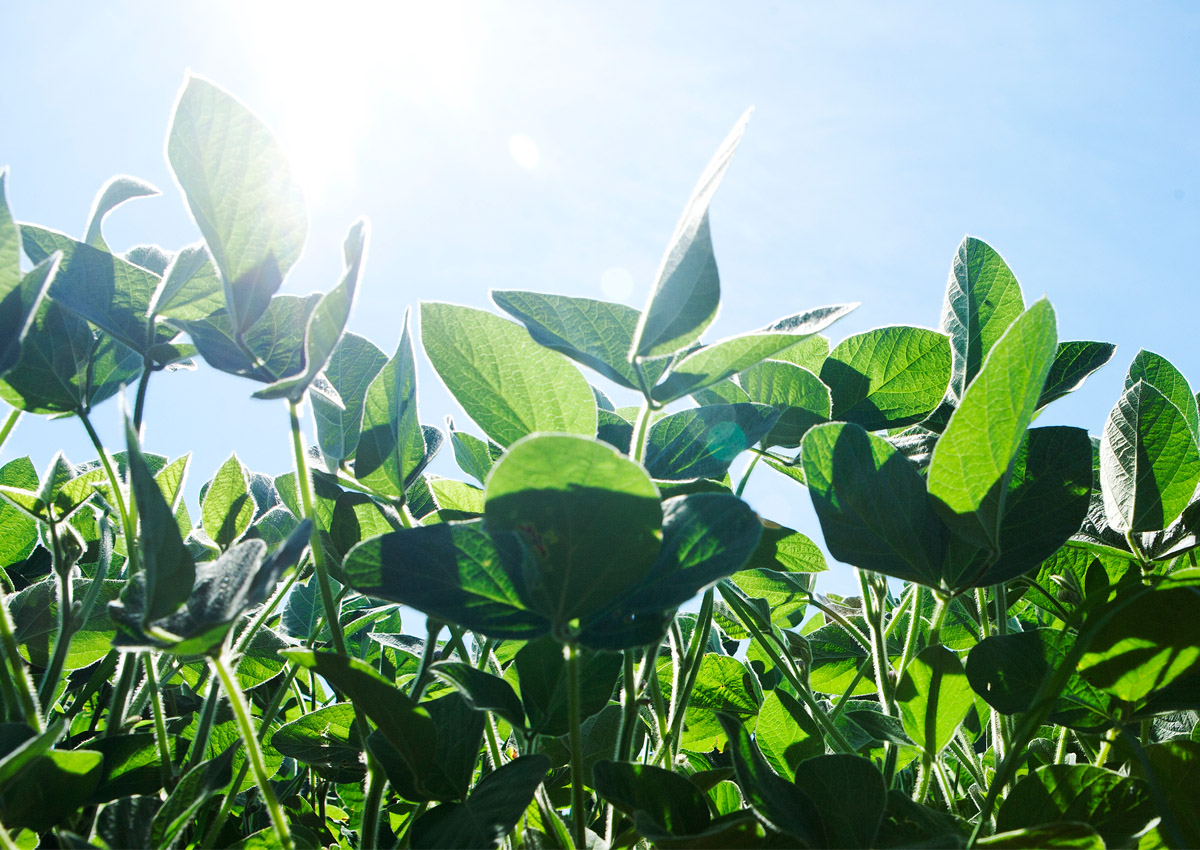
Adapting Photosynthesis to Fleeting Shadows Boosts Soybean Yields
February 26, 2020| |
It is a known fact that crops harness light energy to fix carbon dioxide into food via photosynthesis. A team from the University of Illinois has reported a new mathematical model that is used to understand how much yield is lost as soybean crops grapple with minute-by-minute light fluctuations on cloudy and sunny days.
Yu Wang, a postdoctoral researcher at Illinois working for Realizing Increased Photosynthetic Efficiency (RIPE) said soybean is the fourth most important crop in terms of overall production, but it is the top source of vegetable protein globally. "We found that soybean plants may lose as much as 13 percent of their productivity because they cannot adjust quickly enough to the changes in light intensity that are standard in any crop field." The team created a dynamic computational ray-tracing model that predicts light levels to the millimeter across every leaf for every minute of the day in a flowering soybean crop. The model also takes into account two critical factors: photoprotection and Rubisco activase.
Photoprotection protects plants from sun damage. This process is triggered by high light levels and dissipates excess light energy safely as heat. When light levels drop, it takes minutes to hours for photoprotection to relax, or stop—costing the plant potential yield. The team evaluated 41 varieties of soybean to find out the fastest, slowest, and average rate from induction to the relaxation of photoprotection. Less than 30 minutes is considered "short-term," and anything longer is "long-term" photoprotection.
The team also simulated a sunny and cloudy day in Champaign, Illinois. On sunny days, long-term photoprotection was the most significant limitation of photosynthesis. On a cloudy day, photosynthesis was the most limited by short-term photoprotection and Rubisco activase, which is a helper enzyme—triggered by light—that turns on Rubisco to fix carbon into sugar.
For more details, read the news release from the University of Illinois.
| |
You might also like:
- EFSA Scientific Opinion Concludes Four-Event Stack GM Soybean As Safe As Non-GM Comparator
- Scientists Update Chinese Soybean Genome to Golden Reference
- Gene-edited High Oleic Soybean Oil Now Available in the US
Biotech Updates is a weekly newsletter of ISAAA, a not-for-profit organization. It is distributed for free to over 22,000 subscribers worldwide to inform them about the key developments in biosciences, especially in biotechnology. Your support will help us in our mission to feed the world with knowledge. You can help by donating as little as $10.
-
See more articles:
-
News from Around the World
- FAO Director-General Emphasizes Biodiversity's Role to Food Systems
- Svalbard Global Seed Vault Receives Big Seed Deposit from 35 Genebanks
- Uganda's Ministry of Health Officials Urge Government to Pass Biosafety Law
- Researchers Turn to Exotics to Uncover How Corn Can Adapt Faster to New Climates
- Adapting Photosynthesis to Fleeting Shadows Boosts Soybean Yields
- USDA Targets to Halve US Environmental Footprint, Boost Production 40% by 2050
- Biologists Develop Defense to Fight Crop Infections
- Experts Suggest Consideration of Familiarity for ERA of GM Soybeans in Japan
-
Plant
- CRISPR Helps Determine Sorghum's Ability to Hide from Plant Pest
- Inheritance Patterns of Transgenes in a Series of CRISPR-Cas9 Soybean Lines
-
Read the latest: - Biotech Updates (December 10, 2025)
- Gene Editing Supplement (December 17, 2025)
- Gene Drive Supplement (February 22, 2023)
-
Subscribe to BU: - Share
- Tweet

